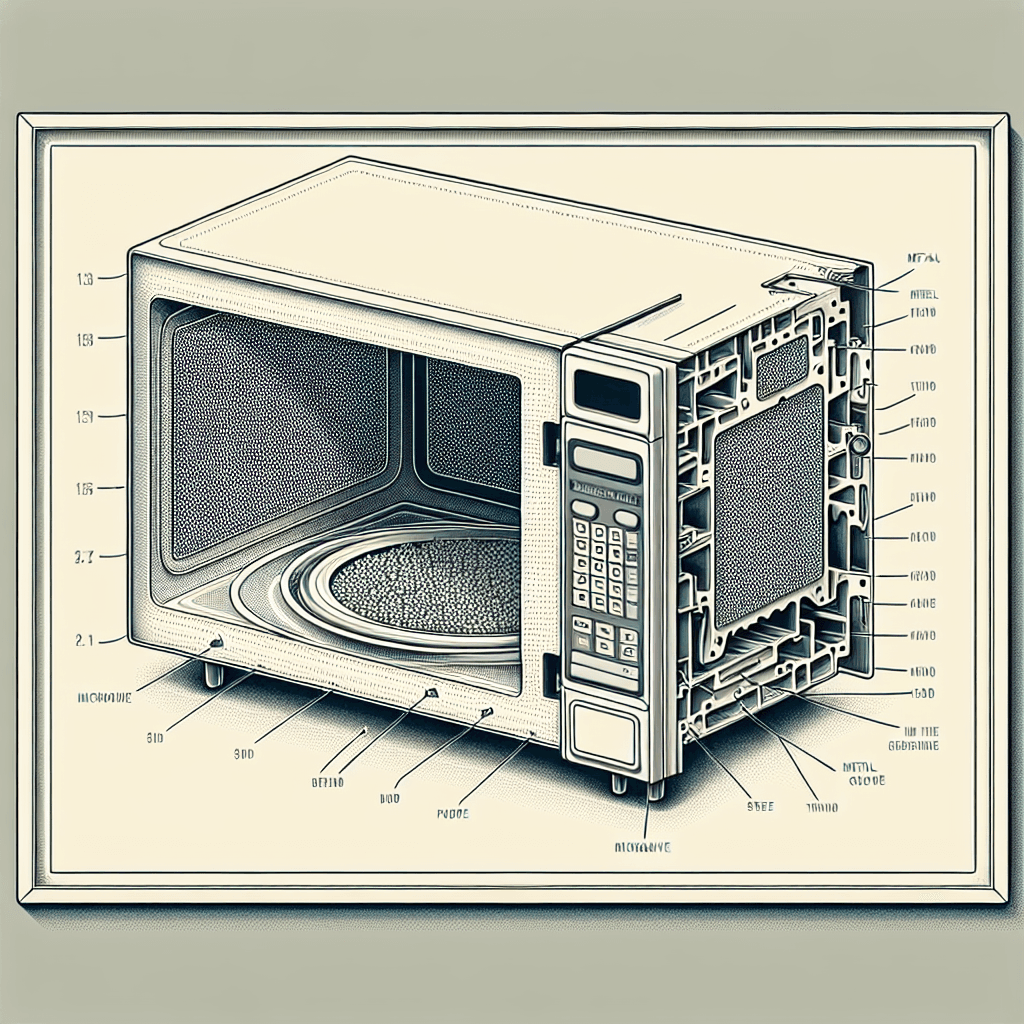Why is there a metal screen with tiny holes inside your microwave's door
That metal screen is the only thing trapping powerful, invisible energy inside your microwave. Discover the simple but brilliant science that makes this "cage" of tiny holes work.


Too Long; Didn't Read
The metal screen is a safety shield that traps microwaves inside to cook your food. The holes are too small for microwaves to escape but big enough for light to pass through so you can see inside.
Decoding the Door: Why Is There a Metal Screen with Tiny Holes Inside Your Microwave's Door?
Have you ever found yourself mesmerized, watching your leftovers spin on the turntable, and wondered about the design of your microwave door? Specifically, that black, dotted grid embedded in the glass. It seems a bit strange—we’re always told not to put metal in the microwave, yet the door is lined with a metal screen. This isn't just a stylistic choice; it's a brilliant piece of engineering that is absolutely critical for the safe and effective operation of your appliance. That screen, often called a Faraday shield or mesh, is the reason you can safely watch your food cook without being cooked yourself. This post will break down the science behind this essential safety feature, explaining how it keeps powerful microwaves in while letting visible light out.
The Faraday Cage: Your Microwave's Invisible Shield
The metal screen in your microwave door, along with the metal interior of the oven itself, forms a device known as a Faraday cage. Named after the English scientist Michael Faraday who invented it in 1836, a Faraday cage is an enclosure made of a conducting material that blocks external electromagnetic fields.
Think of it as a protective bubble. The conductive metal mesh intercepts the electromagnetic waves generated inside the microwave, forcing them to reflect back into the cooking chamber rather than escaping. This serves two primary purposes:
- Efficiency: It keeps the microwave energy concentrated on your food, allowing it to cook quickly and evenly.
- Safety: It contains the microwave radiation, protecting you from exposure. While the radiation levels from a properly functioning microwave are regulated and considered safe, the Faraday cage ensures they remain contained.
How Wavelength and Hole Size Make It Work
This is where the magic really happens. The effectiveness of the Faraday cage relies on a fundamental principle of physics: the relationship between the size of the holes in the mesh and the wavelength of the energy it’s meant to block.
Microwave ovens operate by generating electromagnetic waves, specifically at a frequency of about 2.45 gigahertz. These waves have a relatively long wavelength of approximately 12 centimeters (about 4.7 inches).
Now, look closely at the holes in the door screen. They are incredibly small, typically only a millimeter or two in diameter. Here’s the key: for an electromagnetic wave to pass through a hole, the hole must be larger than the wave's wavelength.
- Microwaves: With a wavelength of 12 cm, they are far too large to squeeze through the tiny millimeter-sized holes in the screen. They are effectively trapped, bouncing off the door and back into the oven. It's like trying to throw a basketball through a keyhole—it simply won't fit.
- Visible Light: Light is also an electromagnetic wave, but its wavelength is minuscule, measured in nanometers (billionths of a meter). Because the wavelengths of visible light are thousands of times smaller than the holes in the screen, they can pass through with ease, allowing you to see inside.
This clever design simultaneously blocks the long-wavelength microwaves while permitting the short-wavelength visible light to pass through.
What if the Screen or Door is Damaged?
Given its crucial safety role, it’s vital that the screen and the entire door assembly remain in perfect condition. A crack in the door glass, a damaged seal, or a bent or warped door can compromise the integrity of the Faraday cage. If the mesh is broken or if gaps appear around the door, there's a potential for microwave radiation to leak out.
Regulatory bodies like the U.S. Food and Drug Administration (FDA) have strict limits on the amount of radiation that can leak from a microwave throughout its lifetime. However, this safety standard assumes the appliance is intact. If you ever notice damage to your microwave door, screen, or seals, it's essential to stop using it immediately and have it professionally repaired or replaced to ensure it remains safe.
Conclusion
The metal screen with its tiny holes is far from a simple design element. It is a precisely engineered Faraday cage that masterfully exploits the properties of wave physics. By creating holes that are small enough to block large microwave wavelengths but large enough to allow tiny light wavelengths to pass, it provides the perfect combination of safety and convenience. This feature contains the powerful cooking energy within the oven while still giving you a window to watch your popcorn pop or your soup bubble. So, the next time you use your microwave, take a moment to appreciate the elegant science at work, keeping you safe one heated meal at a time.


